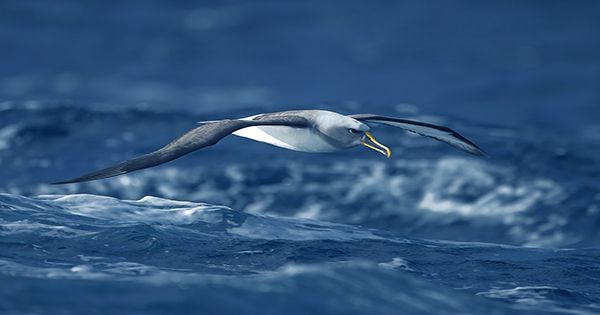If you’ve ever bailed a dive and finished work on a belly flop for everyone, you’ll have a unique appreciation of the ball presented by the excitement of the water surface. The diving animal feels a lot of pressure when it enters the water, which forms an air cavity and eventually a splash occurs as it closes. This force of influence can be reduced by creating a hydrodynamic shape as you enter the water (aka, not a belly flop) and these types of bodies are common among diving seabirds.
Probably one of nature’s most fascinating divers is North Gannett, Morus bassanus, who starred in the opening bait sequence of David Attenborough’s latest publication, “The Perfect Planet.” These hardy marine flocks will follow the dolphin’s footsteps until they find some food on both sides, which is seen as a delicious mackerel shoal on a perfect planet.
As the dolphins begin to approach the fish, they form bait that pushes the mackerel toward the surface of the ocean. Here, as they enter Gannet territory, the birds begin to hit the water like feathery warplanes, some reaching speeds of up to 24 meters (78.7 feet) per second. They can dive up to 11 meters (36 feet) and swim further to catch fish, which they pull to the surface by beating their webbed legs and wings. Performing such a hunting technique must have been a tragedy for humans, so how could these birds be able to hit the bottom of the ocean with such brutality without spreading long, thin necks?
The answer is a shining example of the evolution driven by the survival of the fittest. To fill their environmental niche, gannets have evolved into a highly specialized neck, which studies say will not experience injury until it dives at full speed of 80 meters (262.5 feet) per second.
To investigate how birds can survive by diving into the water at such speeds, a rescue bird’s head was used to detect the hydrodynamics of dive-diving in a study published in PNAS. Their investigation revealed that the skull and neck muscles had physiological features that could stabilize this weak and slender body part during diving when combined with the chosen diving speed of the living bird.
When the head of their dead northern gannet fired vertically over the surface of the water at about 5.5 meters per second, they were able to detect the effects of any plunge dive, cavity formation, and splash stages. The phase of impact occurs when the beak first comes in contact with water, then the cavity stage forms a kind of bubble around the bird as its head is completely submerged.
This stage is interesting because the bird’s head is now declining while the motion of his whole body is continuing. By contracting these, they can stabilize their necks for long periods of time in the bird’s chest water which marks the end of the contraction phase. This combined with the diving speed chosen by the birds to stay in the holes that will not leave their necks behind shows the janitor’s fire in the water like winged arrows.
Researchers predict that each janitor will need to enter about 80 meters (262.5 feet) of water per second to hit, which is significant, twice the maximum speed limit in the United States. Not bad, North Gannet net but there is a limit to their ability to stabilize the neck.















